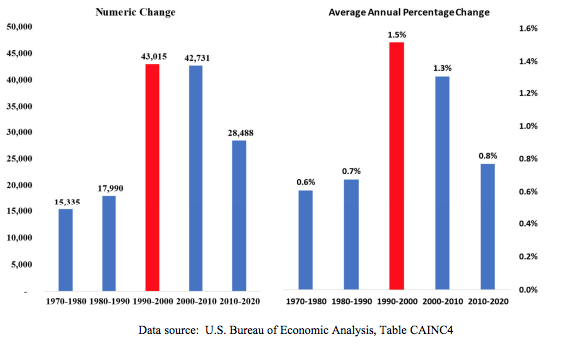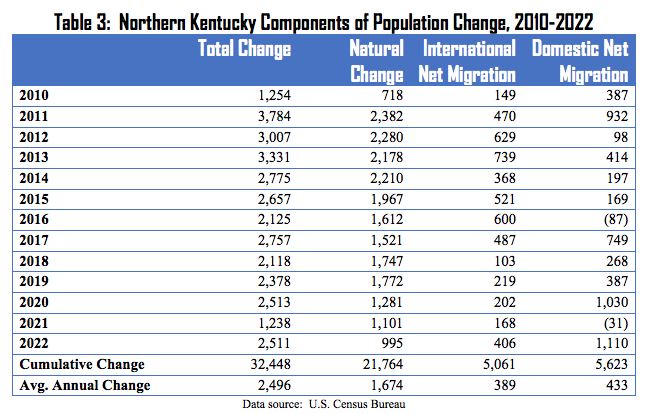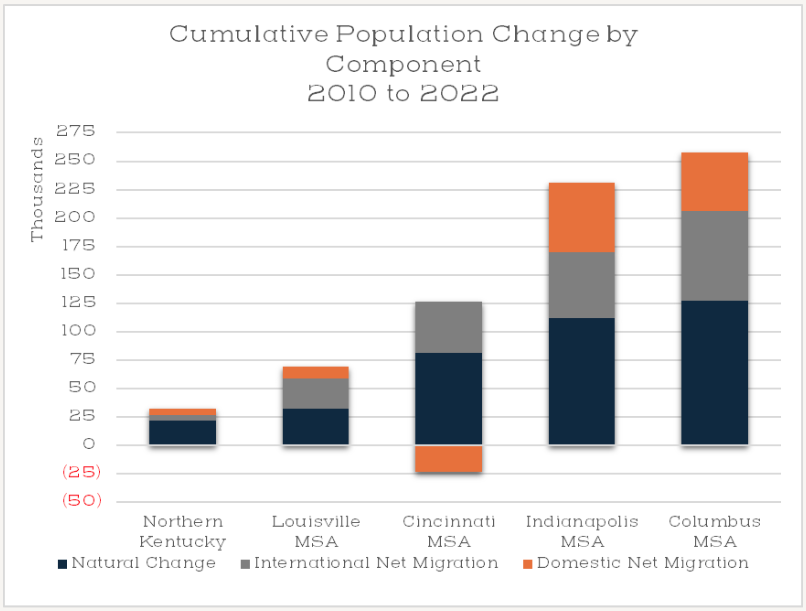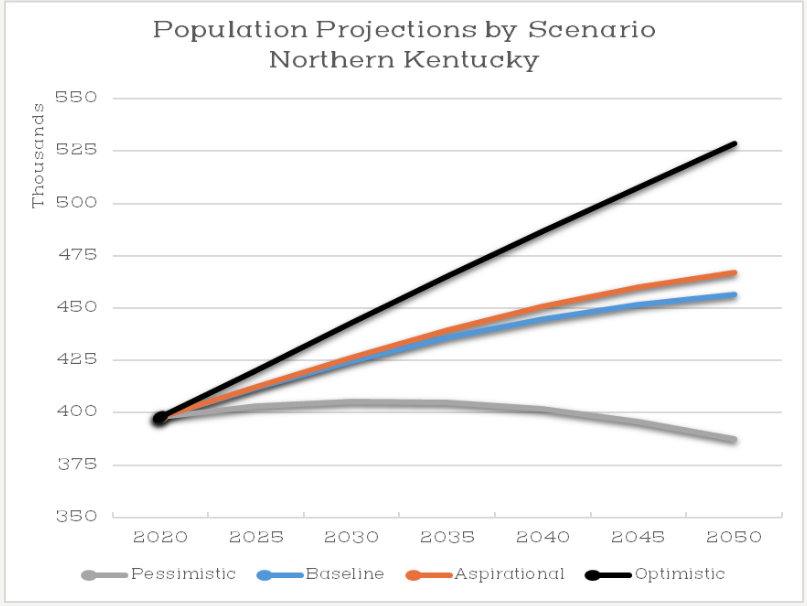The population of Northern Kentucky’s Boone, Kenton, and Campbell counties is expected to grow, albeit modestly, between now and 2050, according to a Population and Labor Force Trends and Future Projections study commissioned by BE NKY Growth Partnership (BE NKY) and researched by Janet Harrah and student fellows at the Center for Economic Analysis and Development (CEAD) at the Haile College of Business at Northern Kentucky University.
BE NKY Growth Partnership funded the study to gain a better understanding of the population and demographic factors that will shape the future size and composition of NKY and the entire Cincinnati MSA labor force.
“To attract new companies and jobs to the NKY region, we need an abundant, skilled workforce to fill these open positions,” said BE NKY CEO Lee Crume. “Population growth and education will help expand our workforce, and the decisions our community makes today to attract and train residents will determine whether we have what we need in the future to sustain our economic success.”
NKY Numeric, Percentage Change in Population by Decade

Overall, the United States population is aging and becoming more diverse, but the rate of growth is slowing. Three main factors determine a region’s population growth: births, deaths, and net migration.
Starting with the 2020 Decennial Census data, CEAD projected population by age and race and provided four scenarios: pessimistic, baseline, aspirational, and optimistic.
The baseline projection for NKY’s three counties estimates average annual population growth of 0.5 percent through 2050, reaching just under 457,000 residents by 2050.
If the region emphasizes pro-growth policies, the optimistic scenario suggests an average annual increase of 1.1 percent, or 529,000 residents by 2050. Conversely, under a downside scenario where the region adopts policies that discourage growth and investment, or we lose one or more major employers, the study indicates the region could see a population decrease of 0.1 percent each year.
“We know hiring employees and having a potential workforce with the right skills are challenges that employers face,” said Crume. “With a current and historically high labor force participation rate exceeding the state and national average, increasing the participation rate among current residents will be difficult, so Northern Kentucky will need to attract talent to drive population growth for our existing and prospective employers.”
Applying these population forecasts, CEAD estimated the workforce size by determining the working age population and applying region and age specific labor force participation rates. The resulting baseline projection for NKY forecasts only a slight increase of 8,450 people to the labor force in 2050 compared to 2020 levels.
Limited in-migration combined with an aging population are the primary drivers of this limited growth.

The baseline projection assumes that the current demographics in a region will continue going forward. It is intended to reflect the “most likely” scenario unless there are policy interventions or unforeseen economic impacts that change the trajectory of net migration, which plays an important role in a region’s growth or decline.
Unless net migration rates significantly change, a region’s future population is largely determined by its current demographics and would be unlikely to move from its baseline forecast.
Since 2010, domestic net migration in Northern Kentucky has averaged 433 people each year. Assuming a consistent natural change rate, Northern Kentucky would need to attract 2,402 people annually, an increase of more than 400 percent from the current average, to exceed its baseline projection and reach the most optimistic growth rate of 1.1 percent.
Effects of Population Growth or Decline
There are both positives and negatives associated with varying growth rates for a region, and the rate of population growth significantly influences a region’s labor force growth and composition.
Positives of growth include increased incomes, jobs, innovation, consumer demand, and an expanded tax base. Negatives include resource scarcity, environmental impacts, infrastructure strain, housing shortages, and pressure on the educational system. Rapid growth can also lead to housing shortages, increased homelessness, and a fast rise in the cost of living.
A stagnating population could lead to limited economic growth and an aging population as younger residents move to other regions for job opportunities. Population decline could discourage new housing construction, and the NKY region is already dealing with a lack of available workforce housing.
The study also compares Northern Kentucky against all U.S. metro areas, with a deeper look at a set of 18 specific peers, including the Cincinnati Metropolitan Statistical Area (MSA).

“These metros are divided into two groups: those metros with which we often compete for economic development projects as well as those that are geographically proximate, and those characterized as growth “hot spots” by either the media or industry sources and are similar in size to the first group,” said BE NKY Research Director David McAleese. “These comparisons provide insight into how we stack up against other communities who are also working to attract companies and grow their economies.”
From 1970 to 2020, the Northern Kentucky population grew 58.8 percent, which ranks 11th out of the 19 comparison metros.
At the same time, among metro areas with a population less than 500,000, NKY’s growth would fall in the middle of the pack.
The CEAD study, which also projected NKY’s labor force growth and future racial and ethnic demographics, can be found in full here.
The executive summary can be found here.




















